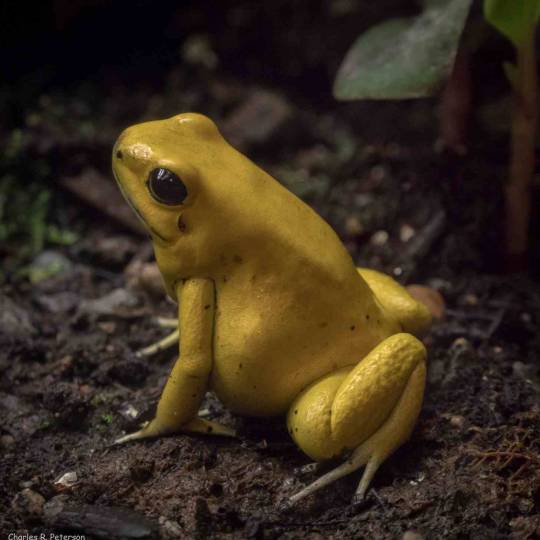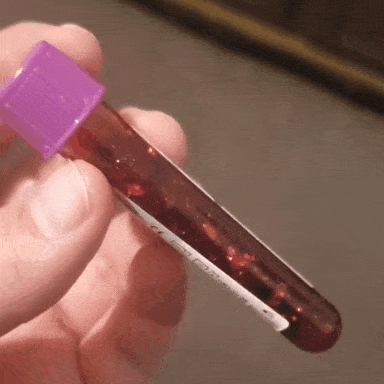#Dengue Transmission
Explore tagged Tumblr posts
Text
#Dengue Fever Symptoms#Dengue Virus#Dengue Fever Treatment#How to Prevent Dengue#Dengue Hemorrhagic Fever#Dengue Fever Vaccine#Dengue Transmission#Dengue Mosquito#Dengue Outbreak#Dengue Fever in Children#Dengue Fever Prevention Tips#Dengue Fever Causes#Signs of Dengue Fever#Dengue Fever in Pregnancy#Dengue Control Measures#Zika and Dengue Virus#Global Dengue Statistics#Dengue Fever Risk Areas#Dengue Fever Diagnosis#Dengue Fever Treatment Guidelines#health & fitness
1 note
·
View note
Text
Tropical diseases are caused by every major group of pathogens (viruses, bacteria, helminths, and protozoa). Moreover, tropical diseases are sustained by a variety of modes and media of transmission. Consider four: insects, skin, water, and soil (see table 8.3).

"Plagues Upon the Earth: Disease and the Course of Human History" - Kyle Harper
#book quotes#plagues upon the earth#kyle harper#nonfiction#tropical disease#disease#disease transmission#pathogen#virus#bacteria#helminth#protozoa#insect#skin#water#soil#vector#malaria#sleeping sickness#yellow fever#dengue fever#chikungunya#loaisis#yaws#impetigo#schistosomiasis#dysentery#hookworm#roundworm#whipworm
0 notes
Text
i rlly do not think white global northerners understand how fucking bad the anti sinovac psyop was in context of the philippines and other targeted countries being from the global south, with a history of economic and military intervention and destabilization by the usa specifically.
i live in the philippines and sinovac was the only available vaccine for MONTHS of the pandemic. people were fucking dying and we had no pfizer, no j&j, no astrazeneca, no moderna. sinovac was the ONLY vaccine supply we had. and the supply wasnt even enough for even my small city. we do not have the infrastructure to manufacture our own vaccines and tests. we were entirely reliant on imports from other countries who Did have the capacity to manufacture such things
i got up early for several days straight to go to a pop up walk in vaccination site (were talking there by 7:30am) set up in a fucking public basketball court because it was the only way to get vaccinated, and 3 times i had to go back empty handed so to speak after exposing myself to this massive opportunity for transmission because they fucking ran out of shots and prioritized the elderly and disabled and i didnt have my legal pwd (person with disability) card yet. i had to go to a different barangay (local unit of government) to get my shot MONTHS LATER and only got mine because one of my family was in the local govt and reserved some shots for us.
many filipinos use facebook which is where some of the psyop was conducted because you can use it for free on your phone and it is often where news is disseminated. i know we have that joke about People Believing Anything They See On Facebook but i cannot stress enough that people here get local news from fb the same way you (used to) get news from twitter about shit like localized emergencies and whatnot.
because we are third world, you know that the state of our education system is nothing compared to the states. media and news literacy here is dangerously low and the population is sensitive to mis/disinformation, as can be seen during the 2022 presidential elections where the usa Also interfered lol. i cannot stress enough how much of the population was susceptible to this psyop, especially those in poverty who couldnt afford proper education. hell, even educated people fell for this shit. do you think jhunjhun who didnt finish grade 6 would be able to identify disguised foreign intervention that was in his own language?
we were already recovering from public scrutiny of a different vaccine, a dengue vaccine, which lowered public trust in inoculation. and then the usa goes and does THIS??? i cannot emphasize enough that they are directly responsible for the tens and thousands of unvaccinated covid deaths. they are responsible for my friends having to bury their unvaxxed parents and grandparents at the age of 19. they are responsible for mass death and disability.
but were just a country in the periphery. so who cares about us? our lives are worthless to the usa, which is why they admitted that they did this when they would otherwise "never" to their own population. third worlders arent real people to your government. we are merely statistics and a petri dish for experimentation. so who cares if we die? the real important thing isnt our lives, its that the usa has more control over us than china.
6K notes
·
View notes
Text
https://www.secondmedic.com/blogs/warning-signs-of-dengue-recognizing-symptoms-and-taking-precautions
#Dengue warning signs#Dengue symptoms#Dengue fever precautions#Recognizing dengue symptoms#Dengue virus transmission#Preventing dengue#Dengue prevention tips#Dengue outbreak#Dengue awareness#Dengue fever treatment
0 notes
Text
Pairing frogs and toads together might conjure memories of Arnold Lobel’s beloved characters — dressed to the nines in caramel coats and polyester — biking off toward adventure.
But in the animal world, frogs and toads on nearly every continent are facing a much more harrowing adventure: a decades-long fight against a mysterious fungal virus that has afflicted over 500 amphibian species.
Since the 1990s, scientists estimate that the chytridiomycosis disease caused by the fungal pathogen Bd (Batrachochytrium dendrobatidis) has led to the extinction of 90 amphibians. One of the lost species includes the Panamanian golden frog, which hasn’t been spotted in the wild since 2009.
Fortunately, a new research study has finally pinpointed the virus that has been infecting fungal genomes for decades.
“Bd is a generalist pathogen and is associated with the decline of over 500 amphibian species…here, we describe the discovery of a novel DNA mycovirus of Bd,” wrote Mark Yacoub — the lead author of the study and a microbiology doctoral student at the University of California, Riverside.
In an interview with UC Riverside News, Yacoub said that he and microbiology professor Jason Stajich observed the viral genome while studying the broader population genetics of mycovirus (viruses of fungi).
The discovery will undoubtedly have monumental impacts on future amphibian conservation efforts. This includes the possible launching of new research studies into fungal species strains, the practice of cloning and observing spores, and engineering a solution to the virus.
But Yacoub cautioned that this is only the beginning.
“We don’t know how the virus infects the fungus, how it gets into the cells,” Yacoub said. “If we’re going to engineer the virus to help amphibians, we need answers to questions like these.”
Still, as scientists strengthen conservation efforts to save frogs and toads (and salamanders too!) they also appear to be saving themselves. Yacoub pointed out several amphibian species around the world have begun exhibiting resistance to Bd.
“Like with COVID, there is a slow buildup of immunity,” Yacoub explained. “We are hoping to assist nature in taking its course.”

Pictured: A Golden poison frog — one of the many species endangered by chytridiomycosis — in captivity.
Why are frogs and toads so important?
From the get go, every amphibian species plays an important role in their local ecosystem. Not only are they prey for a slew of animals like lizards, snakes, otters, birds, and more, but in an eat-or-be-eaten world, frogs and toads benefit the food chain by doing both.
Even freshly hatched tadpoles — no bigger than a button — can reduce contamination in their surrounding pond water by nibbling on algae blooms.
As they grow bigger (and leggier), amphibians snack on whatever insect comes their way, greatly reducing the population of harmful pests and making a considerable dent in the transmission malaria, dengue, and Zika fever by eating mosquito larvae.
“Frogs control bad insects, crop pests, and mosquitoes,” Yacoub said. “If their populations all over the world collapse, it could be devastating.”
Yacoub also pointed out that amphibians are the “canary in the coal mine of climate change,” because they are an indicator species. Frogs and toads have permeable skin, making them sensitive to changes in their environment, and they also rely on freshwater.
When amphibians vanish from an ecosystem, it’s a symptom of greater environmental issues...
Herpetologist Maureen Donnelly echoed Yacoub’s sentiments in an interview with Phys Org, noting that when it comes to food chains, biodiversity, and environmental impact, the role of frogs and toads should not be overlooked.
“Conservation must be a global team effort,” Donnelly said. “We are the stewards of the planet and are responsible for all living creatures.”
-via GoodGoodGood, April 22, 2024
#frog#frogs#toads#frogs and toads#conservation#biodiversity#herpetology#mycology#fungi#endangered species#extinction#ecosystems#climate change#environment#biology#environmental science#ecology#good news#hope#frogblr#frog blogging
354 notes
·
View notes
Text
The virus behind an outbreak in Brazil can spread from mother to fetus
Transmission of Oropouche to the womb means it has a feature in common with Zika and dengue

A virus that caused a large outbreak in Brazil this year can spread from a pregnant woman to the fetus. The confirmation of several cases of transmission to the womb means that the virus, called Oropouche, has a feature in common with two other insect-borne viruses, Zika and dengue.
A 40-year-old woman’s stillbirth this summer in Brazil was linked to transmission of the virus from the woman to the fetus, researchers report October 30 in the New England Journal of Medicine. (The World Health Organization defines a stillbirth as the death of a fetus after 28 weeks of pregnancy.) The Brazilian Ministry of Health has also confirmed two other deaths due to the spread of Oropouche virus to the womb: a stillbirth to a 28-year-old woman and a baby born with congenital anomalies who died after 47 days. There are other potential cases of transmission to the womb being investigated.
As of mid-October, Brazil has reported more than 8,000 cases of Oropouche fever since the beginning of the year. It’s the largest outbreak in the Americas this year; some of the other countries with cases include Peru, with more than 900, and Cuba, with more than 500. Infections can cause fever, chills, joint pain and severe headaches, among other symptoms. The virus is spread mainly by the bite of Culicoides paraensis midges, which are very small flies, and sometimes by mosquitoes. As with Zika, there aren’t any medicines to treat Oropouche fever or vaccines that target the virus.
Continue reading.
#brazil#brazilian politics#politics#science#medicine#biology#oropouche#image description in alt#mod nise da silveira
11 notes
·
View notes
Text
Emergence of SARS-CoV-2 Variants Are Induced by Coinfections With Dengue - Published Sept 11, 2024
More and more study shows that co-infection with covid leads to worse outcomes and more potential for rapid mutation of covid.
Abstract Severe acute respiratory syndrome coronavirus 2 (SARS-CoV-2) that emerged in late 2019 has accumulated a series of point mutations and evolved into several variants of concern (VOCs), some of which are more transmissible and potentially more severe than the original strain. The most notable VOCs are Alpha, Beta, Gamma, Delta, and Omicron, which have spread to various parts of the world. This study conducted surveillance in Jashore, Bangladesh to identify the prevalence of SARS-CoV-2 coinfected with dengue virus and their genomic effect on the emergence of VOCs. A hospital-based COVID-19 surveillance from June to August, 2021 identified 9 453 positive patients in the surveillance area. The study enrolled 572 randomly selected COVID-19-positive patients, of which 11 (2%) had dengue viral coinfection. Whole genome sequences of SARS-CoV-2 were analyzed and compared between coinfection positive and negative group. In addition, we extracted 185 genome sequences from GISAID to investigate the cross-correlation function between SARS-CoV-2 mutations and VOC; multiple ARIMAX(p,d,q) models were developed to estimate the average number of amino acid (aa) substitution among different SARS-CoV-2 VOCs. The results of the study showed that the coinfection group had an average of 30.6 (±1.7) aa substitutions in SARS-CoV-2, whereas the dengue-negative COVID-19 group had that average of 25.6 (±1.8; P < .01). The coinfection group showed a significant difference of aa substitutions in open reading frame (ORF) and N-protein when compared to dengue-negative group (P = .03). Our ARIMAX models estimated that the emergence of SARS-CoV-2 variants Delta required additional 9 to 12 aa substitutions than Alpha, Beta, or Gamma variant. The emergence of Omicron accumulated additional 19 (95% confidence interval [CI]: 15.74, 21.95) aa substitution than Delta. Increased number of point mutations in SARS-CoV-2 genome identified from coinfected cases could be due to the compromised immune function of host and induced adaptability of pathogens during coinfections. As a result, new variants might be emerged when series of coinfection events occur during concurrent two epidemics.
#mask up#covid#covid 19#pandemic#wear a mask#public health#coronavirus#sars cov 2#still coviding#wear a respirator#dengue fever
13 notes
·
View notes
Text
Canada recently issued a travel advisory following the emergence of the Oropouche virus, also known as the 'sloth virus', transmitted through flying insect bites, causing outbreaks in Cuba and South America. Below is an explanation of what the virus is and how it spreads.
Written by Cameron Webb, University of Sydney and Andrew van den Hurk, The University of Queensland
International authorities are issuing warnings about “sloth fever”. Despite the name, it’s not contracted via contact with sloths. Rather, you should avoid contact with mosquitoes and biting midges.
So how can Canadians protect themselves from sloth fever when travelling to South and Central America? And how does “sloth fever” compare with other mosquito-borne diseases, such as Zika?
What is ‘sloth fever’?
Sloth fever is caused by Oropouche virus and is formally known as Oropouche virus disease or Oropouche fever.
The virus is an orthobunyavirus. So it’s from a different family of viruses to the flaviviruses (which includes dengue, Japanese encephalitis and Murray Valley encephalitis viruses) and alphaviruses (chikungunya, Ross River and Barmah Forest viruses).
Oropouche virus was first identified in 1955. It takes its name from a village in Trinidad and Tobago, where the person who it was first isolated from lived.
Symptoms include fever, severe headache, chills, muscle aches, joint pain, nausea, vomiting and a rash. This makes it difficult to distinguish it from other viral infections. Around 60% of people infected with the virus become ill.
There is no specific treatment and most people recover in less than one month.
However, serious symptoms, including encephalitis and meningitis (inflammation of the brain and membranes surrounding the brain and spinal cord) have occasionally been reported.
What’s happening with this latest outbreak?
In July, the Pan American Health Organization issued a warning after two women from northeastern Brazil died following infection with Oropouche virus, the first fatalities linked to this virus.
There has also been one fetal death, one miscarriage and four cases of newborns with microcephaly, a condition characterized by an abnormally small head, where infection during pregnancy occurred. The situation is reminiscent of the Zika outbreak in 2015–16.
Oropouche had historically been a significant concern in the Americas. However, the illness had slipped in importance following successive outbreaks of chikungunya and Zika from 2013 to 2016, and more recently, dengue.
How is Oropouche virus spread?
Oropouche virus has not been well studied compared to other insect-borne pathogens. We still don’t fully understand how the virus spreads.
The virus is primarily transmitted by blood-feeding insects, particularly biting midges (especially Culicoides paraensis) and mosquitoes (potentially a number of Aedes, Coquillettidia, and Culex species).
We think the virus circulates in forested areas with non-human primates, sloths and birds as the main suspected hosts. During urban outbreaks, humans are carrying the virus and blood-feeding insects then go on to infect other people.
The involvement of biting midges (blood sucking insects mistakenly known as “sandflies”) makes the transmission cycle of Oropouche virus a little different to those only spread by mosquitoes. The types of insects spreading the virus may also differ between forested and urban areas.
Why is Oropouche virus on the rise?
The United States Centres for Disease Control and Prevention (CDC) recently issued a warning about rising cases of Oropouche in the Americas. Cases are rising outside areas where it was previously found, such as the Amazon basin, which has authorities concerned.
More than 8,000 cases of disease have been reported from countries including Brazil, Bolivia, Peru, Colombia and Cuba (as of August 21, 2024).
Cases of travellers acquiring infection in Cuba and Brazil have been reported on return to Europe and North America, respectively. On September 3, the Government of Canada issued a health advisory for international travellers after several travel-related cases of Oropouche were reported internationally, the majority of which were in travellers returning from Cuba.
While a changing climate, deforestation and increased movement of people may partly explain the increase and geographic spread of the virus, something more may be at play.
Oropouche virus appears to have a greater potential for genomic reassortment. This means the evolution of the virus may happen faster than other viruses, potentially leading to more significant disease or increased transmissibility.

Areas in South America with reported cases of Oropouche as of September 4, 2024 (Source: CDC)
What can travellers do to protect themselves?
There are no vaccines or specific treatments available for Oropouche virus.
If you’re travelling to countries in South and Central America, take steps to avoid mosquito and biting midge bites.
Mosquito repellents containing diethytoluamide (DEET), picaridin and oil of lemon eucalyptus have been shown to be effective in reducing mosquito bites, and are expected to work against biting midge bites too.
Wearing long-sleeved shirts, long pants and covered shoes will further reduce the risk.
Sleeping and resting under insecticide-treated mosquito bed nets will help, but much finer mesh nets are required as biting midges are much smaller than mosquitoes.
Although no specific warnings have been issued by Canadian authorities, the CDC and European Centre for Disease Prevention and Control have warned that pregnant travellers should discuss travel plans and potential risks with their health-care professional.
10 notes
·
View notes
Note
do you know if it's true that mosquitoes are more likely to bite you if you have more potassium in your body? like if someone eats a lot of bananas can mosquitoes tell and want to bite them?
from what i can find, research on mosquito attractants involving potassium is limited. there's a study suggesting that people who eat bananas are more attractive to a certain species of mosquito, but we there hasn't really been confirmatory tests that it was the potassium that influenced that attraction.
a lot of mosquito attracting has to do with your genetics, and you can't change that. mosquitoes who bite humans are attracted to the volatiles on our skin and breath, so if you eat or drink something that increases those attractive volatiles (eg having beer or a lot of sugar), you're more likely to be attractive. but most of it really just comes down to how genetically smelly you are.
interestingly, one of my favorite papers covers mosquito attraction to dengue vs non-dengue patients. it showed that mosquitoes are more attracted to dengue-infected mice and humans due to the increase of acetophenone on the skin by suppressing the factor that inhibits acetophenone production. also in this study, they swabbed people's armpits to see how attractive that armpit sweat was to the mosquitoes.
6 notes
·
View notes
Text
US health officials issue warning after 'unprecedented' transmission of insect-spread disease: 'Cases are on the rise'
4 notes
·
View notes
Text
'Dengue fever in Argentina broke a record this year. In the first eight weeks of 2024, authorities reported 57,461 confirmed cases and 47 deaths, a 2,153% increase compared with the same period last year. Recent data from the health ministry indicates a new record was reached in March when cases rose to 233,000 and deaths to 161. The spike in cases occurred in the same year Argentina registered record temperatures, providing the conditions for the Aedes aegypti mosquito to thrive. An as-yet-unpublished report from the National Scientific and Technical Research Council (Conicet) associated with the University of Buenos Aires, two leading Argentine institutions, paints a picture of the current state of the epidemic in the country. “Our study shows that the thermal favourability for the mosquito to continue acting for longer has increased and, in this year’s case, has spread among more people,” says Sylvia Fischer, a researcher at Conicet and a co-author of the forthcoming report. “The conditions of large cities, with a large part of the population living in densely populated areas, is another significant factor.” On 2 April, the health ministry published a note on X that questioned the vaccine’s efficacy, saying it would wait for “more scientific evidence” before offering it to the public. “The vaccine is not a validated tool for controlling the transmission of the disease in the context of the outbreak, as expressed by the Pan American Health Organization”, the note said.' - Guardian
9 notes
·
View notes
Text

Genetically Modified Mosquitoes Have Been Released in the US:
The release of genetically modified mosquitoes in the United States started in Florida, marking a controversial step in the fight against mosquito-borne diseases like Zika, dengue, and yellow fever.
After years of regulatory delays and public opposition, bioengineered male Aedes aegypti mosquitoes were introduced into the environment.
The goal of this field test is to suppress wild populations of Aedes aegypti, which make up only 4% of the local mosquito population but are responsible for nearly all mosquito-borne disease transmission to humans.
The genetically modified male mosquitoes, which do not bite, will mate with wild females. These males carry a gene that causes female offspring to die in early larval stages, while male offspring survive and continue passing the gene to future generations. As the population of biting females declines, researchers expect the Aedes aegypti population to gradually collapse, potentially reducing disease transmission. This strategy offers an alternative to insecticides, which have contributed to the evolution of insecticide-resistant mosquitoes.
This U.S. field test follows successful trials by the same company in Brazil, the Cayman Islands, Panama, and Malaysia, where Aedes aegypti populations dropped by at least 90%. The release of genetically modified mosquitoes in Florida adds to previous U.S. trials of bioengineered insects, including diamondback moths in New York and pink bollworms in Arizona. If successful, the mosquito project could offer a sustainable, targeted solution to control mosquito populations without relying on chemical insecticides.
3 notes
·
View notes
Text
Ultimately, the burden of disease in the Pleistocene was disproportionately due to a special class of pathogens that solved the evolutionary challenge of transmitting between hosts by adopting a daring gambit: vector-borne transportation (see table 3.2).

"Plagues Upon the Earth: Disease and the Course of Human History" - Kyle Harper
#book quotes#plagues upon the earth#kyle harper#nonfiction#disease#pleistocene#disproportionate#pathogen#evolution#challenges#disease transmission#gambit#vector#flea#plague#tick#lyme disease#rocky mountain spotted fever#crimean congo fever#lice#typhus#sleeping sickness#relapsing fever#chikungunya virus#mosquito#malaria#yellow fever#dengue fever#hematophage#leishmaniasis
1 note
·
View note
Text
Brucellosis
Case Report
a 45M goat herder in Malaysia develops 3 weeks of fevers, lethargy, night sweats and headache
history revealed he drank unpasteurised milk from said goats, which he also sold to consumers
blood cultures were negative and he tested negative for more common tropical diseases such as malaria, dengue, typhus and lepto
eventually he tested positive for brucella serology, unfortunately about 80 people also developed brucellosis from drinking milk from his farm, and a few lab staff also picked it up from handling their blood samples
consider this differential in PUO

Microbiology
causative organism: Brucella melitensis
gram negative coccobacillus, facultative intracellular
hardy bacteria that can survive prolonged periods in meat/dairy products unless pasteurised/cooked as well as dust & surfaces
picked up in the intestinal submucosa on ingestion and transported by macropahges to lymphoid tissue
it then has the possibility of spreading haematogenously in the liver, spleen, joints etc. causing systemic or localized infection
Transmission
zoonoses (animal associated)
in particular: feral pigs, so hunters are often at increased risk (due to handling the carcasses), but also cattle, sheep, goat and dogs
outbreaks often associated with consumption of unpasteurized milk from infected animals

Epidemiology
global and notifiable disease in most countries
endemic to Mediterraena, South America and the indian subcontinent
in Australia - largely QLD and NT, but now NSW
Increased risk groups (i.e. what to ask on history and what clues on history to consider for brucellosis)
regular contact with animals (herders, abbatoir workers, vets - there are case reports of lab workers who pick up brucellosis etc)
people who ingest unpasteurized dairy/milk, or the undercooked meat of infected animals
History
first described by another European white man, Dr. George Cleghorn, British Army Surgeon in minorca in 1751 on the island of Malta following the Crimean war

it was named for another British white man, Sir David Bruce who led a commission into a fever outbreak among the army in Malta before they found the organism causing the disease (Sir Themistocles Zammit identified that goats transmit it in milk)
Sir bruce also discovered that trypanosoma brucei (also named for him) was the microbe responsible for animal trypanosomiasis/sleeping sickness. incidentally, he was born in Melbourne Australia
trivia with the Crimean war - was ironically a war fought between Russia and the UK + it's Western Allies and the empire that preceded Turkey (Ottoman)
Today the Crimean war is more well known for producing Florence Nightingale, founder of modern nursing and yay, finally a woman in random medical history that hardly is related to brucellosis.
Clinical features
PUO - cyclical fevers, fatigue, headache, insomnia, myalgias/arthralgias, weight loss, anorexia (fairly non specific, but also systemic)
incubation times can be long, which can be deceptive, reportedly up to 50 yrs from first exposure
otherwise, most cases it ranges from 3 days to several week, on average, expect 2-4
sometimes: hepatosplenomegaly
critical on history to clarify travel/living situation or contacts and consumption of unpasteurised dairy or undercooked meat
localized disease also possible, depending on organs involved
up to 40% will report peripheral arthritis, sacroillitis and spondylititis (kinda sounds like ank spa), at worst can cause osteomyelitis and septic arthritis
endocraditis is a rare but serious complication, with a 5% mortality rate, outside of this it's rarely fatal
if the lungs are affected, cough and SOB can occur but hte CXR will be lcear
GBS has been reported to occur following infection
hepatic abscess and granulmoa in a few
also possible: epididymoorchitis and skin manifestations like erythema nodosum
ocular changes like uveitis, cataracts etc.
it really feels rheum flavoured.
Investigations

hints on basic bloods - neutropaenia and anaemia, thromobcytopaenia in the case of hepatosplenomegaly or ITP
raised ESR and CRP, ALP and LDH
elevated LFTs in hepatomegaly
but diagnosis: blood cultures --> can take weeks as slow growing (due to aerosol transmission, must be handled in a biohazard hood as with the case report)
key really: serology is the most commonly used tool
PCR can also be used, including 16S
tissue also an option depending on organ affected
Management:
atypical cover: azith and doxy
several weeks of treatment usually - i.e. if uncomplicated, doxy for 6 weeks (however relapses are common on monotherapy, up to 40%), often rifampicin 600 mg daily for 6/52 is also added or gentamicin
where doxy can't be used, bactrim is the alternative

Sources
CDC guideilnes
WHO guidelines
ETG - behind a paywall, if your institution covers it, uptodate is gold standard, that said, plenty of free resources that provide a great start
Wikipaedia
Statpearls
Case report (There's actually a lot of background pathophysio, investigations and treatment listed in case reports and many are free)
#brucella#brucellosis#crimean war#medblr#infectious diseases#infectious disease#bacteriology#microbiology
8 notes
·
View notes
Text
A record surge in dengue cases throughout Latin America and the Caribbean prompted the head of the Pan American Health Organization to warn of the need for proactive measures to curb the virus that is transmitted by mosquitoes.
PAHO Director Dr. Jarbas Barbosa said in a press briefing Thursday that as of March 26, the region had seen more than 3.5 million cases of dengue and more than 1,000 deaths.
"This is cause for concern, as it represents three times more cases than those reported for the same period in 2023, a record year with more than 4.5 million cases reported in the region,” he said.
As of March, the hardest-hit countries in Latin America are Brazil, Paraguay and Argentina — which have accounted for 92% of the dengue cases and 87% of the deaths — where mosquitoes have thrived because of the warm and rainy weather this time of year.
Barbosa said, however, that they're seeing an uptick in Barbados, Costa Rica, Guadeloupe, Guatemala, Martinique and Mexico, "where transmission is usually higher in the second half of the year.”
U.S. embassies have been issuing health alerts in countries throughout the region, urging people to cover their arms and legs, use mosquito repellent and avoid stagnant water and other mosquito-breeding places.
The U.S. territory of Puerto Rico declared a dengue public health emergency this week, with a surge in cases mostly in the island's capital, San Juan.
According to the Centers for Disease Control and Prevention, “dengue viruses are spread to people through the bite of an infected Aedes species” mosquito, with symptoms that can range from mild to life-threatening for those who get sick from the infection. About 1 in 20 people can get severe dengue, which can lead to death.
The most common symptom is fever, according to the CDC; other symptoms include serious headaches, nausea, vomiting, rash and body pain.
“Facing the dengue problem is a task for all sectors of society,” Barbosa said, urging community engagement.
This includes “efforts to eliminate mosquito breeding sites and protect against mosquito bites, increase preparedness in health services for early diagnosis and timely clinical management, and continuous work to educate the population about dengue symptoms and when to seek prompt medical attention,” according to a PAHO news release.
3 notes
·
View notes
Text
WHO raises alarm on increase in dengue infections

The World Health Organisation, WHO, has raised alarm on the spike in dengue infections recorded in 2023 globally, which represents a potentially high public health threat. The UN health agency raised the alarm on Friday as it reported more than five million dengue infections and 5,000 deaths from the disease globally in 2023. Interfacing with newsmen at the UN headquarters in Geneva, Dr. Diana Rojas Alvarez, WHO Team Lead on Arboviruses, stated that the threat required maximal attention. According to him, the threat also required response from all levels of the UN health agency to support countries in curtailing current dengue outbreaks and prepare for the upcoming dengue season. Dengue is the most common viral infection transmitted to humans bitten by infected mosquitoes. It is mostly found in urban areas within tropical and sub-tropical climates. The increase in the number of reported cases of dengue in more countries is explained by the fact that infected mosquitoes now thrive in more countries because of global warming associated with rising emissions. “Climate change has an impact on dengue transmission because it increases rainfall, humidity and temperature. “These mosquitoes are very sensitive to temperature,” she said. Read the full article
3 notes
·
View notes